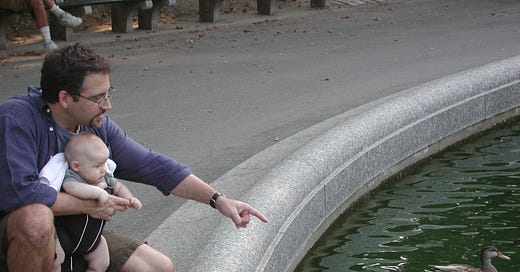We have a kid who is trying to figure out whether or not they have ADHD. The questionnaires include one that we had to fill out about our kid’s behaviors from Kindergarten through 12th grade, and I struggled to answer more than a few of the questions. Yet I was there – 100% there, mostly solo-parenting for about a decade of that time while my husband worked out of the country. Did my kid fidget? My instinct was to answer no until I paid attention to the pen that was flipping through their fingers while they answered questions, and I realized it was always a pen or a coin, or maybe a puzzle cube.
My point is not about the fidgeting, it’s that I couldn’t remember the fidgeting until I had the visual cue. Our kid was a straight A, well-behaved student, and yet their memories were of poor spelling, illegible handwriting, and struggles with math – a totally different experience than the ones we had of their academic development. But when I think back, I can mentally picture the conversation I had with Mr. Sams, the fourth grade teacher who said our kid was a good writer, but a terrible speller. Poor spelling wasn’t a problem in his class, though, and he allowed iPads and autocorrect to adjust for spelling so he could get the content. Again, it was picturing us standing outside Mr. Sams’ class, talking about spelling that brought the conversation back into focus.
*As an aside, the disparity between our kid’s recollection of being a student and ours is worthy of further exploration. Perception is a powerful thing, and I believe that we cannot take alignment in perception for granted, even (or especially) within families. It’s why the most effective conversations usually include, “My experience of xyz is this - what’s yours?”
Our kid says most of elementary school is a blur, and things don’t really start to clear in their memory until middle school. That might be true for me too, but when we go through photo books or watch the digital photo frame scroll, I can immediately recall the location, who else was there, and the event. I can even sometimes tell you exactly what I was feeling then, even if I’d forgotten it entirely until I saw the picture. Obviously, my memories are heavily influenced by visual cues, and not everyone uses the same tools to access their memories, but according to the National Institutes of Health, around 65% of humans are visual learners (as opposed to those who are auditory or reading learners), so capturing as many images as we can of everything in our kids lives can be important.
Why?
Filling out a medical form is one very small reason, but a valid one, and certainly not something I thought about when I was photographing Halloween parades and school plays. From the time our kids were born, I made photo albums for our parents as holiday gifts, and when that practice moved to digital printing, I made a copy for myself too. They’re organized by year and feature all the milestone events, so those albums are an easy way to remember how old the baby was when we went to New York, or to remind the kid about their first grade friends. And I can’t tell you how many times I’ve walked into the living room to see Ed and the dog on the couch with whichever kid wandered by zoning out on the digital frame as it scrolls through hundreds of photos of their lives.
We are the keepers of our children’s stories. We can put context to their memories, and our own memories can become theirs with the visual cues of photos. In the years between birth and the end of high school, our children do SO MUCH that even those things we thought were our whole world (little league, swim team, robotics tournaments, travel, holidays) can become vague stories without the crisp edges of photos to remind us – and them – how they became the people they’ve grown to be.




